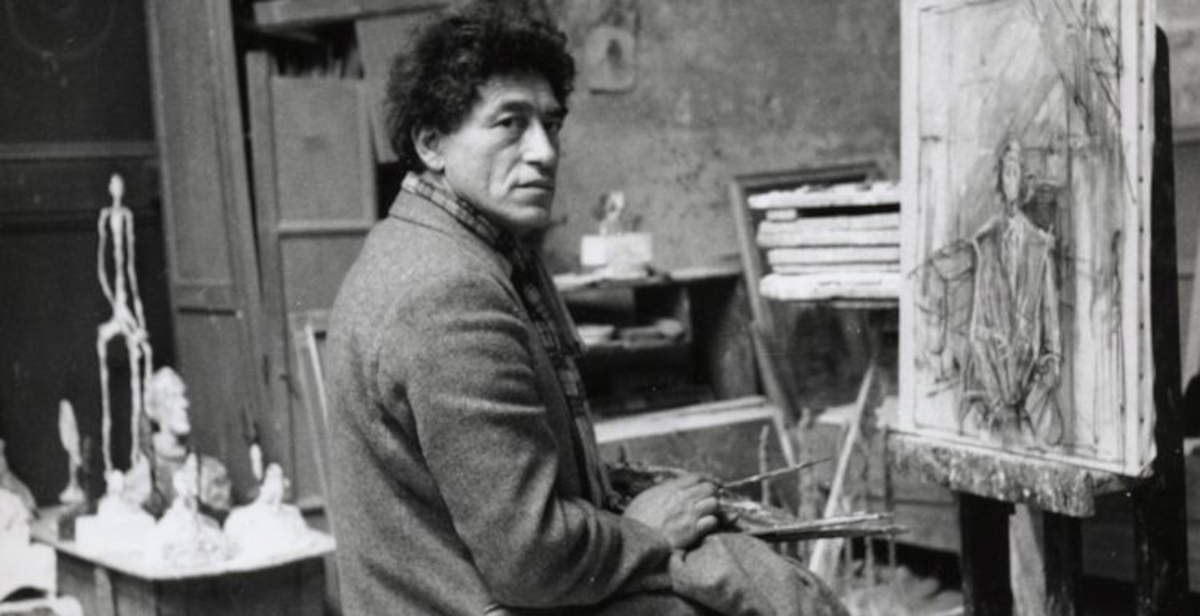For the first time in Marseille, the work of Alberto Giacometti (Borgonovo di Stampa, 1901 - Chur, 1966) is presented in a monographic exhibition that analyzes in depth his artistic production: the concept of emptiness. The exhibition, entitled Alberto Giacometti. Sculpting the Void, will run from June 6 to Sept. 28, 2025 at the Cantini Museum. The initiative is a collaboration between the City of Marseille - Musée de Marseille - and the Giacometti Foundation in Paris, custodian of the artist’s work. The retrospective brings together a relevant body of work, including bronze and plaster sculptures, paintings, drawings and prints. The exhibition is designed to offer the public a comprehensive view of the evolution of Giacometti’s oeuvre, delineated around a precise thematic axis: the centrality of emptiness as a plastic, conceptual and philosophical space.The exhibition brings together iconic works - plaster and bronze sculptures, paintings, drawings and engravings - to explore the theme of emptiness, a central concept in Giacometti’s practice around which the different phases of his career are articulated. An artist of emptiness, as Jean-Paul Sartre called him, according to whom his work represented “a way of experiencing space,” Giacometti conceived imaginary spaces from which often isolated forms, figures and characters emerge, inextricable from their surrounding context. In sculptures as much as in drawings and paintings, the void becomes an operational tool for the artist.
The exhibition opens with a section devoted to the synthetic, solid and dense forms of sculptures made in the late 1920s, such as The Couple (1926) and Spoon Woman (1927), which reveal Giacometti’s interest in Cubism and non-European arts. A second section, focusing on the Surrealist period, presents seminal works such as the painting The Palace at 4 a.m. (1932) and the sculptures Flower in Danger (1932) and Invisible Object (1934-1935), also known asHandsHolding the Void. The result of dreams or visionary states, these creations express a plastic quest beyond the visible. The third section, covering the period after World War II until the artist’s death in 1966, marks a return to the representation of the human figure, driven by a desire to restore reality as it was perceived. Playing with proportion and distance, Giacometti investigates the relationship between figure and space in works such as Very Small Figurine (1937-1939), Woman with Chariot (1943-1945), The Nose (1949) and Tall Woman I (1960).
The exhibition concludes with a section juxtaposing drawings and etchings by the artist with archival documents and ancient and non-European objects from the collections of the Museum of Mediterranean Archaeology and the Museum of African, Oceanic and Native American Arts in Marseille. Conceived as an imaginary museum, these connections highlight the fundamental influence of these sources in the artist’s reflections on space and emptiness.

The exhibition dedicated to Alberto Giacometti establishes a dialogue with The Watchers, a project by artist Ali Cherripresentedat the [mac] - Museum of Contemporary Art in Marseille from June 6, 2025 to January 4, 2026. Some of the works exhibited at [mac] were specially created by Cherri in resonance with Giacomettian practice, continuing his reflection on the representation of the human face. In 2024, Ali Cherri was invited by the Giacometti Foundation to engage with the sculptor’s plaster casts as part of the exhibition Envisagement, curated by Romain Perrin.
Alberto Giacometti, Swiss sculptor, painter and draftsman, was born in Borgonovo in the Bergell Valley. The son of Giovanni Giacometti (1868-1933), a well-known Impressionist painter who was highly regarded in the Swiss art and collecting scene, Alberto was immersed in a creative environment from a young age. In 1922 he moved to Paris, where he enrolled at the Académie de la Grande Chaumière and studied sculpture under Antoine Bourdelle. During those years he came into contact with the artistic avant-garde and developed a strong interest in African and oceanic sculpture, particularly evident during the period when he was linked to André Breton’s Surrealist group, between 1930 and 1935. After World War II, the artist developed a personal and unmistakable style: slender, elongated figures through which he communicated a profound sense of isolation and vulnerability. His work was nourished by an intense existential quest, influenced by Jean-Paul Sartre’s philosophy and phenomenology. In the 1950s and 1960s, Giacometti achieved international fame, evidenced by major retrospectives in 1965 at MoMA in New York, the Tate Gallery in London, and the Louisiana Museum of Modern Art in Humlebæk. He won prestigious awards, including the Grand Prize for Sculpture at the 1962 Venice Biennale. Although his health deteriorated, he continued to work tirelessly until his death on January 11, 1966, in Chur, Switzerland.

 |
| Alberto Giacometti on display in Marseille: sculptures, paintings and the central theme of emptiness |
Warning: the translation into English of the original Italian article was created using automatic tools. We undertake to review all articles, but we do not guarantee the total absence of inaccuracies in the translation due to the program. You can find the original by clicking on the ITA button. If you find any mistake,please contact us.